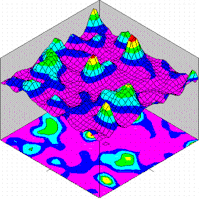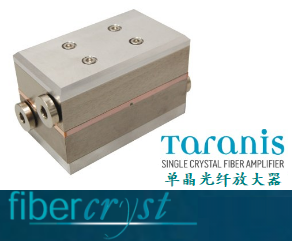公司简介
Applied Optics Research公司成立于1983年,总部位于伍兰德,AOR致力于最先进的物理光学和激光软件的开发。是GLAD的端到端激光分析软件的开发者。

GLAD is the state-of-the-art in physical optics and laser analysis software.
GLAD is an acronym for General Laser Analysis and Design. The objective in developing GLAD has been to develop an easy-to-use program which can model every type of system which uses coherent light.
To find out more about GLAD, click on the figure on the left.
关于GLAD
The GLAD program has been developed over the last 20 years and has been applied to thousands of modeling applications. Solving hundreds of new and challenging modeling problems each year gives us the inspiration to develop new features and new examples leading to continuous improvement.
GLAD can model almost any type of laser or physical optics system with a complete end-to-end analysis, including full diffraction propagation, detailed treatment of laser gain, and many other laser effects. GLAD includes a rich range of features to handle the most difficult and complex modeling problems.
产品列表
GLAD contains powerful features to model beam trains, stable and unstable resonators, and most other optical systems. All products come with one year of technical support, warranty, and upgrades (by download) from the date of shipment.
GLAD Pro (59P) features:
Designed for both engineering modeling and advanced research.
Native 32 bit code. Runs on both 32 and 64 bit operating systems.
Limited to 2GB system memory.
Laser resonators: stable, unstable, ring lasers.
Detailed four-level laser gain, steady-state gain, gain sheets.
Complex physical optics systems
Finite element thermal modeling.
Propagation in 3D geometry.
Astigmatism of tilted and decentered mirrors.
Idealized refractive elements.
Dielectric waveguide modeling.
Diffration propagation multi-threading supports two CPU’s.
Detailed ray tracing calculations of tilted and decentered mirrors.
Detailed ray tracing calculations of complex lens groups with tilts and decenters.
Damped least squares optimization of all system parameters.
In addition to detailed four-level gain, includes three-level gain, and semiconductor gain.
Nonlinear optics: Raman, frequency doubling, four-wave mixing, optical limiting, sum frequency generation.
Zigzag amplifier.
Atmospheric effects: turbulence and thermal blooming.
High NA vector diffraction calculations.
Lens array features.
GLAD Pro 64 has all features of GLAD Pro and adds:
Native 64 bit. Requires a MS Windows 64 bit operating system. The native code of GLAD 57P64 runs about 40% faster than 57P.
Access all available memory. (No 2GB application memory limitation.)
Security dongle supports both GLAD Pro (32 bit) and GLAD 64 (64 bit). Customer has access to both GLAD Pro (32bit) as well as GLAD 64 bit.
Multi-threading of four-level gain and diffraction propagation up to 16 CPU’s.
Coherent gain for short pulse effects.
| Part Number: | Description: | Price: |
| 59P64 | GLAD Pro 64 bit, Ver. 5.9 | $6,340.00 |
| 59P | GLAD Pro, Ver. 5.9 | $4,940.00 |
Upgrades:
| Part Number: | Description: | Price: |
| 59U7 | Upgrade from Ver. 5.8 to 5.9 | $1,200.00 |
| 59U6 | Upgrade from Ver. 5.7 to 5.9 | $1,800.00 |
| 59NU5 | Upgrade from Ver. 5.6 to 5.9 | $2,500.00 |
One-year warranty, free technical support, and product upgrades included with all original purchase and upgrade purchases. Shipping charges added to all orders.
GLAD 3-day course provides intensive hands-on training.
| Part Number: | Description: | Price: |
| 59CCH | GLAD 3-day course, (Next: Shanghai, China, to-be-determined) | $1,300.00 |
| 59CUS | GLAD 3-day course, (Next: San Diego, CA, Aug. 5-7, 2015) | $1,200.00 |
GLAD Applications |
| Everyone who works with coherent (or partially coherent) light can benefit from the program. With GLAD, the user is able to model both simple optical systems and highly complicated, multiple laser configurations. The code is designed to analyze all types of beam trains and laser devices including the effects of diffraction, active media, apertures, lenses and mirrors, and aberration. In GLAD, optical beams are represented by by complex amplitude using rectangular computer arrays. This is the most general and powerful approach. Old methods such as geometrical ray tracing, gaussian ray propagation, ABCD methods, and rotationally symmetric propagation methods can not compare in power and versatility. GLAD has been applied to a wide variety of the most advanced physical optics modeling applications including commercial laser systems, laser research experiments, stable and unstable laser design, transient laser response, photolithography, high-performance phase plates for beam control, diffraction effects, and single and multiple mode waveguides. |
GLAD Features
Modeling:
Simple conventional systems or complex multiple laser beam trains
Coherent and incoherent interactions
Nonlinear gain models
Lenses and mirrors: spherical, toroidal or cylindrical
General aperture shapes
Near- and far-field diffraction propagation
Stable and unstable resonator modeling
Aberration effects including: Seidel, Zernike, phase grating, and smoothed random wavefronts
Lens and mirror arrays
Variable size arrays to 32,768 x 32,768 (GLAD 64 bit) and beyond
Rectangular arrays and separable diffraction theory
Propagation of multiple, independent laser beam trains
Automatic propagation technique control (may be overridden)
Special features for resonator design
Gain sheets, rate equation kinetics
Global coordinate system and geometrical aberrations
Arbitrary mirror locations and rotations
Raman, four-wave mixing, frequency doubling
High Fresnel numbers
Kolmogorov model of atmospheric aberration
Thermal blooming
Self-focusing effects
Zonal adaptive optics model
Phase conjugation
Polarization modeling
Partially coherent modeling
Variable index of refraction modeling
ABCD propagators
Fiber optics and 3-D waveguides
Binary optics and gratings
Vector diffraction for high NA objective lenses
M^2 characterization
Phase retrieval method
Finite-element thermal modeling
Phase retrieval and simulated annealing optimization
Optimization
Least squares optimization of any configuration
User-defined merit functions
All system parameters may be used as optimizing variables
Geometrical optics
Lens groups may be defined and analyzed using conventional geometrical optics methods
User Interface
Interactive command structure
Integrated design environment (IDE)
Graphical displays: isometrics, profiles, polarization, contour plots
enhanced graphics: bitmaps, combined isometric and contour plots, Windows printing and metafiles
Utilities for conversion of graphics to Windows metafiles (*.wmf)and PostScript
Macros of commands
Algebraic expressions and user-defined variables in commands
Interface with user programs for pre- and post-processing
More than 90 examples of all types of systems
Command language
GLAD has a simple but powerful command language so that problems can be set up rapidly and conveniently. To facilitate learning the command language, numerous examples are provided in the Examples Manual. To aid in modeling complex systems, a sophisticated MACRO language is provided.
Easy to use and learn
GLAD has been engineered to be easy to use. Commands are mnemonic. The program may be run interactively or in conjunction with files of commands. You can begin working immediately from the any of the more than 90 examples which are distributed with the code. GLAD is thoroughly documented in several volumes: detailing the theoretical basis, command descriptions, and over 90 examples from a wide range of applications.
Automatic algorithm selection
GLAD makes diffraction calculations easy by handling the details need for accurate numerical analysis. Diffraction calculations employ different algorithms for near- and far-field calculations. GLAD selects the appropriate algorithm automatically to avoid excessive aliasing errors.
Fully supported
AOR provides free technical support for one full year. For international customers fax and e-mail allow quick and convenient support because of GLAD's text-based command format.
Warranty
One full year warranty (extendable). Any reported defects will be repaired at no cost.
GLAD Examples |
| These two examples illustrate some of optical systems that can be modeled by GLAD, click on one of the link below to get more information. |
Demo/Download
|
Aug 5-7, 2015, San Diego, CA. Registration |
GLAD is the acknowledged leader in physical optics and laser modeling. Learn to master this important field and the GLAD program in a three-day course. Instructors: Dr. George N. Lawrence, developer of GLAD. The participant will gain intuitive understanding of diffraction, optical propagation, laser gain, waveguides, and selected nonlinear optics components; learn the essentials of numerical modeling. Instruction will be by lectures on the underlying theory, in-depth discussion of numerous practical examples, and hands-on experience in solving problems in guided computer instruction sessions. This course is an introductory course in the use of GLAD to model physical optics effects when diffraction, gain, nonlinear interactions and coherence are important. This course does not assume prior experience with GLAD, but does assume some knowledge of optics and/or lasers. Course InstructorGeorge Lawrence is the President of Applied Optics Research, AOR, and the author of the GLAD Program. He has been a leading researcher in physical optics modeling for more than 20 years and taught lens design and optical modeling as an associate professor at the Optical Sciences Center, University of Arizona. He received his Ph.D. in optical sciences from Optical Science Center, University of Arizona (1980). Course SummaryWe will select from the following topics as the three-day schedule permits. Early registrants are encouraged to submit suggestions of topics and problems to be included in the course. Please email suggestions to glad@aor.com. Working with GLADThe course shows how to apply GLAD to a wide variety of practical and research applications through hands-on training. The participant will learn to use the powerful GLAD command language to model both simple and complex systems and to get started with the more than 500 examples provided with the program in 125 major categories. Topics include physical optics propagation, simple and complex aberrations and apertures; detailed geometric analysis of complex optical systems; stable, unstable, and ring resonators; detailed rate equation gain; transient response; Q-switch lasers; atmospheric and thermal effects; selected nonlinear optics models; dielectric and reflecting wall waveguides; organizing long calculations and summarizing results; generating graphics; understanding and controlling aliasing and other sampling problems. DiffractionFresnel diffraction; gaussian beams; Talbot imaging; high Fresnel number effects; propagators including transfer function, Fourier integral; finite difference propagator; fast Hankel transform; vector diffraction; high numerical systems and vector diffraction; dipole projection approach to vector diffraction; polarization-dependent diffraction effects; waveguide propagation in dielectrics; input-output coupling for waveguides; coupled waveguides; multimode waveguides; propagation through gradient index (GRIN) media; through-focus image structure; propagation through thick components including thick refractive elements, thick prisms, tilted apertures, tilted phase plates, grazing incidence mirrors, and non-Fourier propagation methods. System analysisRelationship of physical and geometrical optics; role of paraxial optics in physical optics propagation; uses of the ABCD method; integration of geometrical ray tracing into physical optics analysis; aberrations including Seidel, Zernike; phase and amplitude gratings, random phase plates; atmospheric aberration; LENSGROUP commands; thermal blooming; beam propagation in tilted and decentered systems; diffraction propagation by imaging principles; spatial filters; interferometers including Tyman Green, Mach Zender, point diffracting, Michaelson, and shearing interferometers; Schlieren systems; multiple mirror systems; lens arrays; partial coherence effects; laser diode to optical fiber relay systems; binary optics; volume holograms; thermal modeling; beam characterization including modulation transfer function (MTF), Strehl ratio, wavefront variance, M squared, irradiance uniformity, etc. Photonics devices3D and 2D waveguides, optical fibers, fiber-to-fiber coupling, directional couplers, y-combiners, y-branches, geodesoc lenses, the effective index method. ResonatorsStable and unstable resonators, numerical analysis methods; use of the RESONATOR commands; intercavity components; ideal and "real" cavity modes, transverse mode competition; spectral selectivity and longitudinal modes; coherent coupling; loaded cavity calculations, including nonlinear gain. Gain media and nonlinear opticsSimple saturated gain models, rate equation models and transient effects; Q-switched devices; Raman amplifiers; second harmonic generation; optical parametric oscillators (OPO's) and k-matching effects; spontaneous emission including treatment of random noise; excimer lasers and speckle smoothing techniques. OptimizationNonlinear least squares optimization; special considerations for physical optics, optimization of time-varying problems, optimization by phase retrieval, optimization by simulated annealing. GLAD internalsStructure of the program, memory management, surrogate gaussian beams, automatic propagation control, selection of propagation algorithms. |








